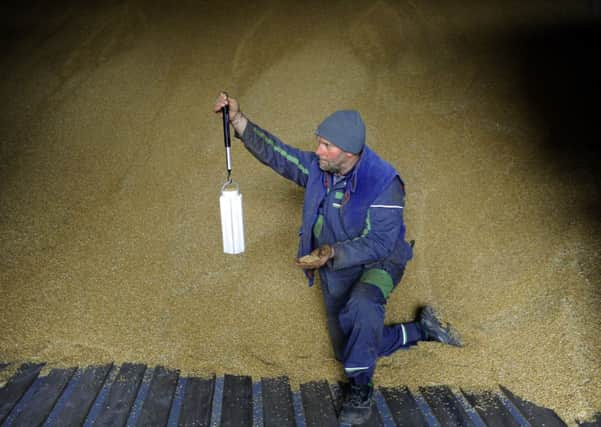Tentative first steps in a high tech new field


Controlled traffic is a new maxim and precision farming has become the umbrella under which most of today’s advances are gathered.
There are many larger farming operations that have embraced latest developments but there is still the lion’s share to be convinced that future investments often running to tens of thousands of pounds will actually be worthwhile when analysing an end of year performance.
Advertisement
Hide AdAdvertisement
Hide AdPhil Meadley farms just over 600 acres at Grange Farm, North Frodingham in East Yorkshire with his brother Adrian.
They grow wheat, barley, oilseed rape, vining peas and beans on what Phil describes as a medium sandy clay loam. He knows that’s a mouthful but he explains it that way because of a high sand content on what is fundamentally a clay loam.
While Phil and Adrian have taken on some new technology with their Claas Lexion 630 combine and have recently invested heavily in a new grain store they haven’t as yet seen how their farm can benefit to the extent of taking on precision farming practices bearing in mind the cost of doing so.
“We’re not a big farm in arable terms and the economies of scale are not great for us.
Advertisement
Hide AdAdvertisement
Hide Ad“What we need to find out is the parts of precision farming that will work for us and what financial benefit they will bring.
“We can see that there should be benefits but what we have to do is look where our limited resources will work best.”
And having taken the plunge with some new technological additions, Phil and Adrian have indeed found ways of enhancing their farming operations.
“One of the elements of new technology we have taken on in recent times is on-combine weighing of grain.
Advertisement
Hide AdAdvertisement
Hide Ad“We took that on as part of our purchase of the combine two years ago and it now allows us to assess the yields of each field and variety instantly.
“It is done by a magic eye looking across the grain elevator and calculating the amount on each paddle as it goes up to the tank. Knowing exactly what that tonnage is also helps when putting it into store.
“What we wanted to know was the difference in yield between the different varieties and which was doing better.
“Yields also vary from field to field and that’s where we understand precision farming could help.”
Advertisement
Hide AdAdvertisement
Hide AdLast year Grange Farm became an HGCA (Home Grown Cereals Authority) monitor farm. Phil has his reasons for being a part of the scheme that sees a number of farmers and industry specialists come together regularly to talk about future developments in cereal production and current problems many are facing with blackgrass and mycotoxins.
Phil says he is also using the meetings to check out where he and Adrian’s next technology movement should be.
“We’re not currently using the N Sensor or other kit because we don’t know which is the best system.
“If you talk with those who have whatever they have got they will tell you it’s great and it works but in our situation we’re still not sure.
Advertisement
Hide AdAdvertisement
Hide Ad“We want to start with the right building blocks. I’m sure that eventually we will go fully precision, as everybody probably will be, but will it be cost effective and which is the best thing to start with?
“The HGCA is independent and they’re not selling us anything. I thought that by becoming a monitor farm this might be a better road to go down than asking a commercial company that is understandably looking to sell its own wares.
“Our involvement as a monitor farm hasn’t cost us anything but our time and we have learned quite a bit. Everyone talks and you find out what everyone else is thinking which helps.
“It’s an honest and open debate and isn’t like being down at a pub when someone is telling you their tonnage per acre with an N Sensor.”
Advertisement
Hide AdAdvertisement
Hide AdPhil is perhaps typical of many arable farmers who operate in the 200 to 1,000 acre bracket. It would be easy for him and Adrian to buy lots of new kit but at a time when grain prices have come down from the heady heights of three years ago that’s the real crux.